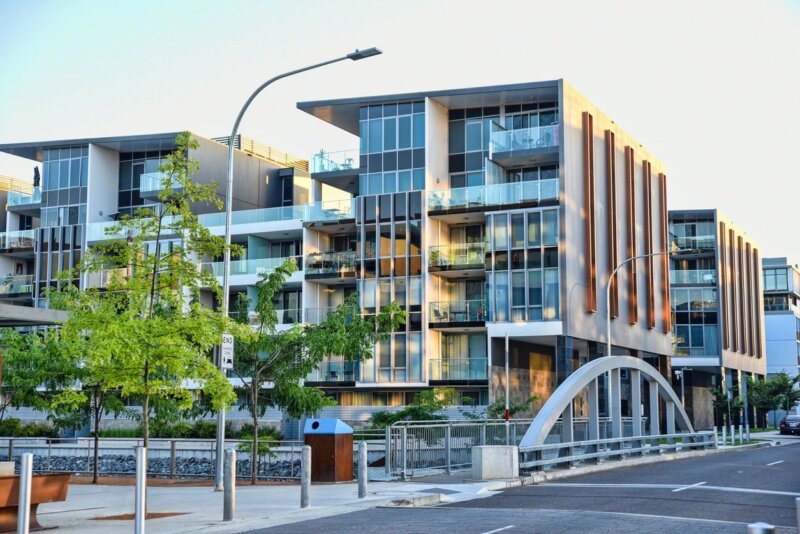The next time you see an ugly, tired old light industrial building, try looking at it with a fresh pair of eyes. It may be the key to earning a pretty penny.
Property development is a big subject, with simple flips sitting at one end of the spectrum and multi-million-pound projects at the other. My advice for first-time property developers is to find something between the two. Stick to small-scale developments. While a bigger project may provide ten times the profit and will involve less than ten times the work on your part, it can easily involve ten times the stress and ten times the risk.
My second recommendation would be to avoid having to apply for full planning permission. You will be relieved to know this does not mean building a block of flats and hoping that no one at the council notices. Instead, it means using permitted development rights (PDRs) to change the use of an existing building without the need to apply for full planning permission.
PDRs are rights granted by the government that allow us, among other things, to convert commercial buildings to residential use without the need for full planning permission. In England, since 1st August 2021 it has been possible to convert a much wider range of properties into residential without the need to apply for full planning permission. To give you some idea, you can now convert shops, cafes, restaurants, banks, financial and professional services buildings, gyms, light industrial buildings, offices, doctors’ surgeries, medical or health services buildings, creches, day nurseries, and indoor sports centres. That gives us a vast number of small-scale projects to aim for since many of these buildings will be way too small for larger developers to bother with.
Where to look
There are two basic rules to remember when it comes to understanding how to win good property deals.
1. Avoid as much competition as possible by looking where other developers aren’t.
2. Know how to make more profit from a property than the other people looking at it.
It is usually relatively easy to see how an office building could be converted to flats because the windows are in the right place and there’s usually a provision for parking. Retail conversions will also turn a few heads, given the proliferation of empty units and the perennial desirability of urban living. Again, it’s relatively easy to see how retail uppers could be converted into apartments, as many already have been all over the country.
But if offices and shops will be where most people look, they’ll fall foul of rule number one. Look past the opportunity most people are drooling over towards the least attractive one that almost everyone overlooks: ugly can be beautiful when it comes to property development. By the same token, we need to make sure there are enough of these ugly opportunities available, otherwise, the strategy could be over before it’s begun. So, what is the ugliest building type on the list where there is still a plentiful supply? The sweet spot for my money is light industrial. Here’s why.
The sweet spot
Light industrial buildings are buildings that house industrial processes and are located in a residential area. This proximity to other homes is an obvious benefit since we don’t want to convert properties that are in the middle of nowhere or on an industrial estate. Nearly every town in the country has hundreds of these buildings. Most have grown organically, sometimes without planning permission, over the last century or so. Walk down any number of streets near the town centre, and you’ll see plenty of them, often hiding in plain sight. Many are little more than four walls and a roof, the idea being to create a large open-plan space that can house whatever business is being run there. Printing works, MOT centres, workshops, car repairers, widget manufacturers – there’s a long list of businesses that will occupy light industrial units. And it’s fair to say that the vast majority of these buildings are not what you’d call ‘lookers’ – they’re quite the opposite.
As a result, when most people look at a light industrial building, they don’t immediately think about the great opportunity to convert it into apartments. Instead, they wonder who would possibly want to live in such an ugly old building and decide that it would need to be knocked down to start again. This immediately removes most of the competition since the cost of demolishing and then rebuilding from scratch will be far more than simply converting what’s already there. This is excellent news, as it satisfies rule number one: ditch the competition.
Most light industrial buildings will be built on a thick concrete slab. This slab will typically extend across the entire floor plate and should be more than sufficient to support a residential building. This means that wherever you want to build a wall, you already have a nice firm base in place. In many cases, the base may even be deep enough to support a multi-storey residential building: two storeys is always going to be more profitable than one.
Additionally, most light industrial buildings are open plan, unlike office buildings which tend to have supporting pillars and stairwells dotted around. This makes for far fewer constraints in terms of the layout of your flats. It is relatively straightforward to upgrade the walls, floor, and roof to residential specification, plus your contractor will love you since they can do most of the work inside, under cover (rain isn’t much fun to work in and can even stop play). Light industrial buildings also tend to have significant headroom. This could not only allow you to add a second storey or to create vaulted ceilings, but you also have room to raise the floor to accommodate insulation and pipework underneath. And since you’re not disturbing the existing concrete base, any potential contamination issues lying underneath it will remain equally undisturbed.
And a huge benefit of converting light industrial buildings lies in most people’s inability to see past an ugly façade, doubting they can make a silk purse out of a sow’s ear. I’m reminded of this argument each time I see the eye-watering cost of flats converted from the old wharf buildings on the Thames or the loft apartments in New York. A few generations ago, living in one of these buildings would have been unheard of, yet now they’re eminently desirable, with prices to match. Rather than try to mask their heritage, the developers have made a feature of it. I won’t pretend that the old printing works on Commercial Street has the same kerb-appeal as a wharf conversion overlooking Tower Bridge. But the same principle applies, and a good architect be able to sort the external appearance, and they will also be able to incorporate heritage design cues and features that add both interest and value. And when the competition is a bevy of uninspiring, lookalike flats, your more characterful, individual units will certainly gain an edge.
The ability to convert to residential using permitted development rights and a lack of competition make these buildings an attractive proposition, plus the small-scale nature of these projects make them ideal for the first-time developer. Not for the first time, as it turns out, beauty is in the eye of the beholder.
ABOUT THE AUTHOR
Ritchie Clapson CEng MIStructE is a veteran property developer of almost 40 years and co-founder of propertyCEO, a nationwide property development and training company that helps people create a successful property development business in their spare time. It makes use of students’ existing life skills while teaching them the property, business, and mindset knowledge they need to undertake small scale developments successfully, with the emphasis on utilising existing permitted development rights to minimize risk and maximize returns.
https://www.facebook.com/propertyceotraining/
https://www.instagram.com/propertyceotraining/
https://www.linkedin.com/company/propertyceo






